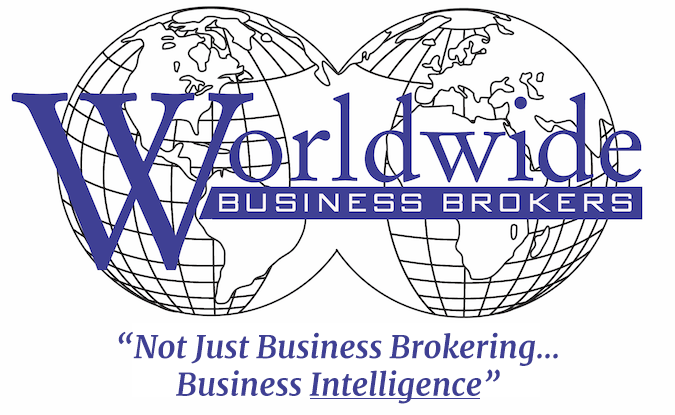Business Valuations: Let Me Count the Ways!
 Business valuations are, not surprisingly, a critical part of our business.
We value businesses for all sorts of reasons, not just for sellers when it comes time to sell.
We do business valuations for divorces, partnership dissolutions, financing and refinancing, insurance, buy-sell agreements among partners and a host of other reasons. In fact, we also value businesses for buyers.
And aside from offering this service to the community at large – which builds our brand and name recognition – performing business valuations is a profitable way to fill downtime and provide another source of revenue to a business broker’s office.
Business valuations are, not surprisingly, a critical part of our business.
We value businesses for all sorts of reasons, not just for sellers when it comes time to sell.
We do business valuations for divorces, partnership dissolutions, financing and refinancing, insurance, buy-sell agreements among partners and a host of other reasons. In fact, we also value businesses for buyers.
And aside from offering this service to the community at large – which builds our brand and name recognition – performing business valuations is a profitable way to fill downtime and provide another source of revenue to a business broker’s office.
How Are Business Valuations Done?
Business valuations require a great deal of work and there is no one way to approach establishing a business’ Most Probably Selling Price. In fact, when doing business valuations, it is important to use multiple methods of arriving at the valuation of the business. Huh? You mean there are multiple methods to valuing a business? That’s right, Bucko, there are. And we go over a half-dozen or so in our course, The Basic “How-To” of Becoming a Business Broker. So, why should we care about the different way of valuing a business? Shouldn’t they all come to the same – or similar – result? Au contraire,mes amis! They generally will not. And it’s important to use multiple methods for a number of reasons. Using more than one method will help you validate the results of other methods – or show you that something is wacky somewhere and one or more of your previous conclusions may need to be revisited.
Or maybe one or more of the results is an outlier – one that is WAY off when compared to the others. Outliers happen all the time. But if you use only one valuation, you’ll never know if you’ve got a defensible number of not.
Using more than one method will help you validate the results of other methods – or show you that something is wacky somewhere and one or more of your previous conclusions may need to be revisited.
Or maybe one or more of the results is an outlier – one that is WAY off when compared to the others. Outliers happen all the time. But if you use only one valuation, you’ll never know if you’ve got a defensible number of not.
First, valuing a business is not child’s play. You need to arrive at a number that positions the client’s business in the market place so that it has a reasonable chance of finding a buyer.
_____________________________________________________________________________
Our course, The Basic “How-To” of Becoming a Business Broker”, teaches how to market and sell businesses.
Become a Professional Business Broker…
Second, we use many different methods to value a business and anyone who takes our course will know that more than one should be used and should know how to use them.
Addressing both of these issues requires a lot of time. A blog post is woefully inadequate to take you through the steps of even one valuation method but I can give you a brief description of some of the methods we use.
Multiples
Everybody we talk to has an opinion about “multiples”, most of which aren’t even remotely related to real life. The first question is “a multiple of what”? Net income? Taxable income? Sales? While we use a multiple of sales as one of the approaches we take, it is not the the most reliable method and, as such, not the most important result in our calculations. And neither “net income” or “taxable income” matter in the slightest.Market and Asset
The Market approach uses multiples but adjusts either the multiples or the results based on outside factors.Capitalization of Earnings
Capitalization of earnings is a method of determining the value of an organization by calculating the worth of its anticipated profits based on current earnings and expected future performance. This method is accomplished by finding the net present value (NPV) of expected future profits or cash flows, and dividing them by the capitalization rate. This is an income-valuation approach that determines the value of a business by looking at the current cash flow, the annual rate of return, and the expected value of the business. Determining a capitalization rate for a business involves significant research and knowledge of the type of business and industry we’re valuing – more research and knowledge than we have the time to do or acquire. But we don’t need to do all that research and acquire all that knowledge. We don’t need to determine a capitalization rate for each business we value. We only need to know the general range of capitalization rates – “cap rates” to us insiders – used in the valuation of small businesses.
A cap rate is, essentially, a rate of return on an investment. The rate of return varies depending on the level of risk a buyer believes the investment entails. The lower the risk, the lower the rate of return demanded by buyers.
The capitalization of earnings approach is one of the more important ones we use when doing business valuations.
Determining a capitalization rate for a business involves significant research and knowledge of the type of business and industry we’re valuing – more research and knowledge than we have the time to do or acquire. But we don’t need to do all that research and acquire all that knowledge. We don’t need to determine a capitalization rate for each business we value. We only need to know the general range of capitalization rates – “cap rates” to us insiders – used in the valuation of small businesses.
A cap rate is, essentially, a rate of return on an investment. The rate of return varies depending on the level of risk a buyer believes the investment entails. The lower the risk, the lower the rate of return demanded by buyers.
The capitalization of earnings approach is one of the more important ones we use when doing business valuations.
Debt Coverage
This is a simple but important calculation to determine what amount of debt the business can carry. This approach answers the question, “how much debt will this business’ cash flow allow a buyer to take on?” Remember, the three things a business must be able to provide its owner. Calculating debt coverage helps us validate the conclusions arrived at by the other methods we use.Discounted Cash Flow Analysis
_____________________________________________________________________________
Our course, The Basic “How-To” of Becoming a Business Broker”, teaches how to become a professional business broker.
Become a Professional Business Broker…
The Bottom Line
Of course, the first step in business valuations is identifying what it is that you’re valuing. Most of the methods we use are predicated on the business’ discretionary cash flow. Without knowing what that is, you’re unlikely to even come close to the business’ value no matter what method you use. As I mentioned earlier, how to value businesses is the module of our course that dives deep into what is really the foundation of what we do. It focuses on how to determine what the business REALLY puts in the pockets of the owners and how to put a value on that amount. This is, after all, what a buyer is most interested in. Every buyer will ask him- or herself two basic questions, “How much can I make if I buy this business?” and “How much am I willing to pay for that income?” With the proper approach to business valuations, you’ll have the answer to the first question and a rough idea as to the answer to the second before you even bring the business to market. If you have any questions, comments or feedback on this topic – or any topic related to business – I want to hear from you. Put them in the Comments box below. Start the conversation and I’ll get back to you with answers or my own comments. If I get enough on one topic, I’ll address them in a future post or podcast. I’ll be back with you again next Monday. In the meantime, I hope you have a profitable week! Joe #business #businessacquisition #sellabusiness #becomeabusinessbroker #businessbrokering #businessvaluation #MergersandAcquisitions
#business #businessacquisition #sellabusiness #becomeabusinessbroker #businessbrokering #businessvaluation #MergersandAcquisitions
